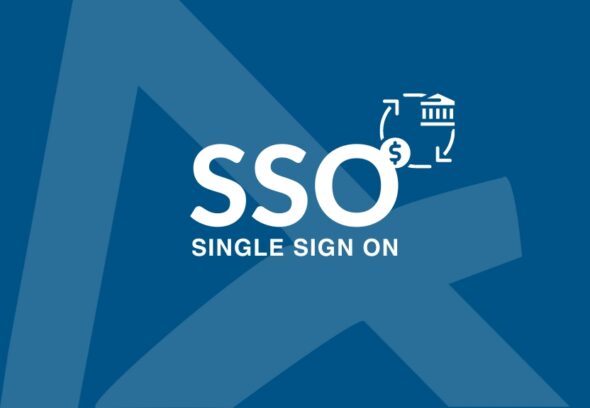Single Sign-On (SSO) provides users with a single set of login credentials for them to access multiple applications or systems, thus eliminating the need of many different usernames and passwords. This combines the benefits of a single sign-on system into the login process. It not only simplifies the login procedure but also increases security by eliminating the need for users to remember multiple passwords, which is a common reason for the use of weak and easily compromised passwords.
Moreover, SSO offers financial sectors the ability to control access and privileges in a granular way. With SSO, admins will be able to control users access to different apps and systems from a single place, and making sure only authorized staff can access confidential financial data. It significantly mitigates the chance of data leaks and unauthorized access which secures the institution and its customers.
Security And Convenience is a Balancing Act in Finance
The financial industry should take into account the particular challenges when it comes to offering security and convenience at the same time. On the other hand, financial institutions are obliged to keep their clients’ financial details safe from cyber security threats and fraudulent activities. Unlike customers, however, they want a smooth and user-centered experience when accessing their financial accounts and doing transactions.
Single sign-on (SSO) enables financial institutions to make their login process simpler, yet more secure. Additionally, SSO improves the user experience through which customers can effortlessly move between various financial apps and systems without having to log in repeatedly. This achieves both time and satisfaction as the user can quickly find the information and services they need.
How Single Sign On Can Make Security Better in Finance Industry
SSO allows financial institutions to implement MFA better. MFA introduces an additional security layer through user authentication using multiple authentication factors, including a password and a one-time code sent to the user’s mobile device. SSO ensures that the authentication process is centralized and simplified, making it possible for FIs to enforce MFA across their entire infrastructure.
Additionally, SSO enables banks and financial institutions to revoke access to resources instantly and smoothly when an employee departs the company. Instead of disabling access to each application and system individually, administrators can completely block the user’s SSO credentials and all associated resources.
Provisioning guarantees quick action to potential security risks and reduces the chances of unauthorized access.
As for the Financial Institutions, SSO would be implemented.
Successful SSO deployment in financial organizations is a result of meticulous planning and consideration. Here are some key steps to follow:
- Identify the applications and systems: Start by locating the applications and systems that will be interfaced with the SSO solution. This includes both web-based applications and desktop programs, including online banking platforms, customer relationship management (CRM) systems, and payroll systems.
- Evaluate SSO solutions: Look into and assess a variety of SSO solutions present in the market. Look at the things as compatibility with the existing systems, scalability, security features and user experience. Pick a solution that meets the unique demands of your financial establishment.
- Define the authentication process: Decide on which authentication methods will be used with SSO. This may cover passwords, authenticator apps, biometrics, or hardware tokens. Think about implementing multi-factor authentication to make your system more secure.
- Establish user roles and permissions: Define the roles of users and the corresponding permissions so that users can only access the applications and systems that are relevant to their duties. This enables to reduce the chance of inappropriate entry and leakage of information.
- Test and deploy: Conduct a thorough pre-production testing of the SSO solution in an isolated environment before rolling it out to production. Perform a broad range of security and compatibility tests to investigate and fix any issues that might occur. When testing is finished, roll out the SSO solution to the users of your financial institution, making sure to provide them with instructions on how to use the new authentication method.
Best Practices For a Financial SSO Implementation
To ensure a successful SSO implementation in financial institutions, consider the following best practices:
- Strong authentication policies: Implement strict password policies that include password complexity requirements, password expiration and the ban of the reuse of passwords. To provide additional authentication factors, consider using biometrics or hardware tokens, apart from passwords.
- Regular security assessments: Carry out regular security audits to detect vulnerabilities and probable weaknesses in your SSO implementation. This is a part of penetration testing, vulnerability scanning and security audits. Deal with any detected problems immediately to ensure that the security posture is healthy.
- Continuous user education: Inform users about the significance of solid authentication methods and the risks connected with weak passwords and sharing login information. Set specific rules for creating and handling passwords, and inform users on regular basis to be careful from fraudulent activities and phishing attempts.
- Regular system updates: Ensure that the SSO solution and all the integrated applications and systems are up to date with the latest security patches and updates. Regularly review and refresh access controls, user roles, and permissions to make sure that only the authorized personnel have access to sensitive financial data.
Conclusion: SSO advantage for the financial companies
Through combining multiple login credentials into one set, SSO simplifies the authentication process for users and administrators alike, while minimizing the risk of weak passwords and password reuse. In addition, SSO improves security by the ability to implement multi-factor authentication and to automate the access revocation procedures.
Financial institutions need to use sophisticated authentication systems to safeguard their customers’ data and their image. With the adoption of SSO and the strict adherence to best practices, finance companies are able to lead the digital transformation process and achieve the highest levels of security and comfort.




